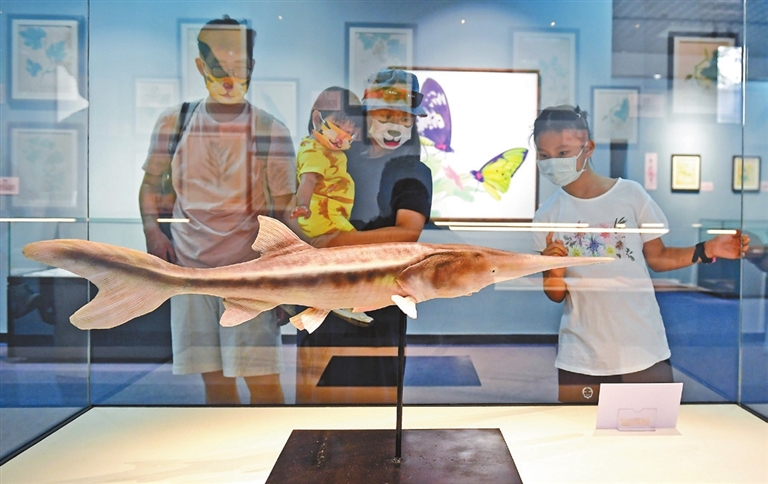
THE International Union for Conservation of Nature and Natural Resources (IUCN) announced the extinction of the Chinese paddlefish and the wild Yangtze sturgeon last week in its updated Red List of threatened species. The global sturgeon reassessment published by the IUCN on Thursday revealed that 100% of the world’s remaining 26 sturgeon species are now at risk of extinction, up from 85% in 2009. The reassessment has also confirmed the extinction of the Chinese paddlefish (Psephurus gladius) and that the Yangtze sturgeon (Acipenser dabryanus) has moved, from critically endangered, to extinct in the wild. Additionally, 17 species are now critically endangered, three are endangered and five are vulnerable on the IUCN Red List. According to the reassessment, sturgeons have been overfished for their meat and caviar for centuries. Therefore, stronger enforcement of regulations against the illegal sale of sturgeon meat and caviar is critical to stop further declines. Besides, dams affect all sturgeon species migrating to their breeding grounds, while rivers warming due to climate change further disrupts sturgeon reproduction. The restoration of freshwater ecosystems and building effective fish passages, together with restocking, are key measures to support the long-term survival of the world’s sturgeons. Both Chinese paddlefish and Yangtze sturgeon are representative aquatic species of the Yangtze River Basin. The Chinese paddlefish is one of the world’s largest freshwater fish species with a length of up to 7 meters. The paddlefish, which had existed for 150 million years, could grow to 5,000 kilograms in weight. It is endemic to China and is flagship species of the Yangtze River. The Chinese paddlefish was listed as a first-class State-protected animal in China in 1989 and was first declared “critically endangered” by the IUCN in 1996. A paper released on the online edition of international journal Science of the Total Environment in 2020 showed that the Chinese paddlefish may have become extinct between 2005 and 2010. IUCN experts have said there is no image evidence of the species since 2009. It was last seen alive in 2003. The paper, jointly written by Chinese experts from the Yangtze River Fisheries Research Institute and two international experts, said the Chinese paddlefish was once common in the Yangtze River, but its population had declined dramatically since the late 1970s as a result of overfishing and habitat fragmentation. Its extinction declaration follows the classifications of the Yangtze River dolphin, a type of freshwater dolphin, and the Reeves shad, a freshwater fish, as functionally extinct. Along with the loss of the Chinese paddlefish, another sturgeon species, the Yangtze sturgeon is now classified as “extinct in the wild.” Existing individuals in the river are the result of the release of captive stocks. Wild populations of the Siberian sturgeon, the third species in Asia mentioned in the assessment and widely used in aquaculture, were also moved to the highest threat category of critically endangered. Chinese netizens were dismayed upon hearing the news. Many netizens commented that they were sad they had never seen the Chinese paddlefish before it disappeared forever. Some said the extinction has rung a bell, and called on other netizens to join the campaign to protect endangered species. In 2020, China began a 10-year fishing ban in key areas of the Yangtze River to protect biodiversity, according to the Ministry of Agriculture and Rural Affairs. (Global Times) | 
